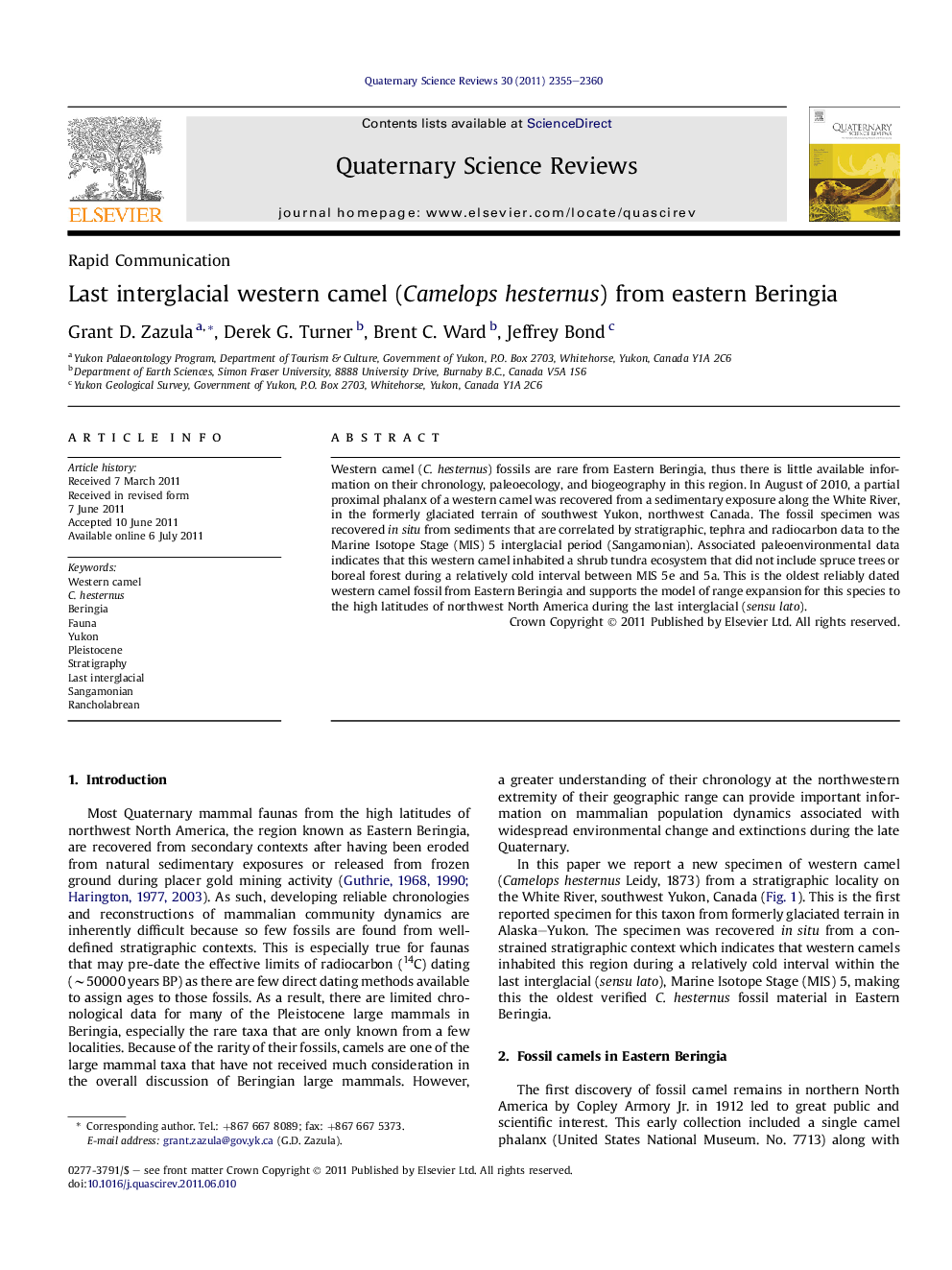| کد مقاله | کد نشریه | سال انتشار | مقاله انگلیسی | نسخه تمام متن |
|---|---|---|---|---|
| 4736703 | 1640908 | 2011 | 6 صفحه PDF | دانلود رایگان |

Western camel (C. hesternus) fossils are rare from Eastern Beringia, thus there is little available information on their chronology, paleoecology, and biogeography in this region. In August of 2010, a partial proximal phalanx of a western camel was recovered from a sedimentary exposure along the White River, in the formerly glaciated terrain of southwest Yukon, northwest Canada. The fossil specimen was recovered in situ from sediments that are correlated by stratigraphic, tephra and radiocarbon data to the Marine Isotope Stage (MIS) 5 interglacial period (Sangamonian). Associated paleoenvironmental data indicates that this western camel inhabited a shrub tundra ecosystem that did not include spruce trees or boreal forest during a relatively cold interval between MIS 5e and 5a. This is the oldest reliably dated western camel fossil from Eastern Beringia and supports the model of range expansion for this species to the high latitudes of northwest North America during the last interglacial (sensu lato).
► This paper reports a new western camel (C. hesternus) fossil from Yukon, northwest Canada.
► The fossil is correlated to a relatively cold interval of the MIS 5 interglacial (∼87–115 ka).
► This is the oldest reliably dated western camel fossil from Eastern Beringia.
► Western camels migrated to the northwest extremity of their range during the last interglacial.
Journal: Quaternary Science Reviews - Volume 30, Issues 19–20, September 2011, Pages 2355–2360